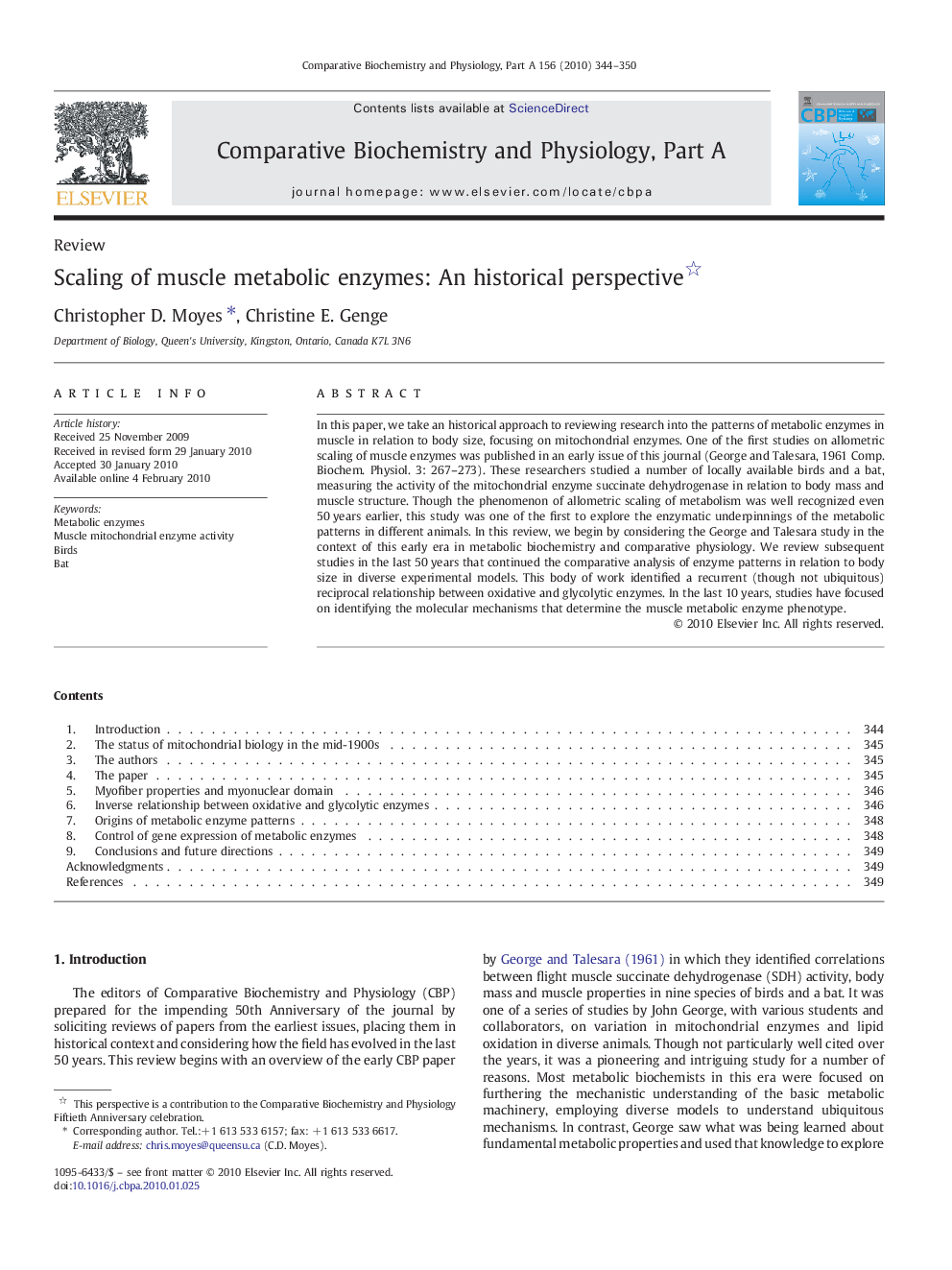| کد مقاله | کد نشریه | سال انتشار | مقاله انگلیسی | نسخه تمام متن |
|---|---|---|---|---|
| 1972640 | 1060282 | 2010 | 7 صفحه PDF | دانلود رایگان |

In this paper, we take an historical approach to reviewing research into the patterns of metabolic enzymes in muscle in relation to body size, focusing on mitochondrial enzymes. One of the first studies on allometric scaling of muscle enzymes was published in an early issue of this journal (George and Talesara, 1961 Comp. Biochem. Physiol. 3: 267–273). These researchers studied a number of locally available birds and a bat, measuring the activity of the mitochondrial enzyme succinate dehydrogenase in relation to body mass and muscle structure. Though the phenomenon of allometric scaling of metabolism was well recognized even 50 years earlier, this study was one of the first to explore the enzymatic underpinnings of the metabolic patterns in different animals. In this review, we begin by considering the George and Talesara study in the context of this early era in metabolic biochemistry and comparative physiology. We review subsequent studies in the last 50 years that continued the comparative analysis of enzyme patterns in relation to body size in diverse experimental models. This body of work identified a recurrent (though not ubiquitous) reciprocal relationship between oxidative and glycolytic enzymes. In the last 10 years, studies have focused on identifying the molecular mechanisms that determine the muscle metabolic enzyme phenotype.
Journal: Comparative Biochemistry and Physiology Part A: Molecular & Integrative Physiology - Volume 156, Issue 3, July 2010, Pages 344–350